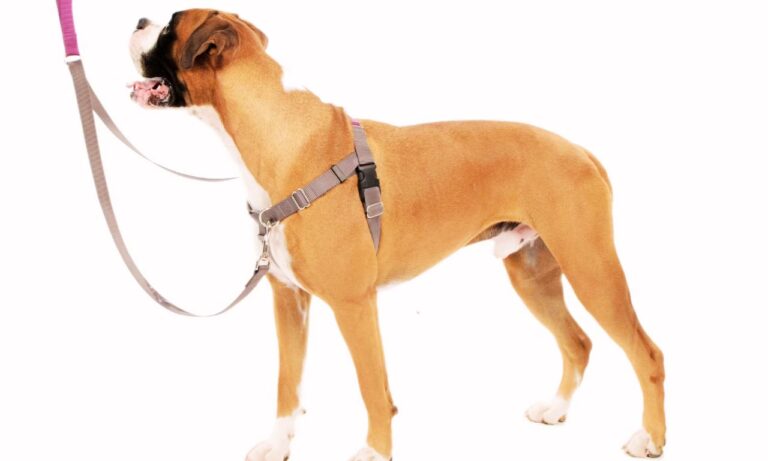Dog shock collars, also known as e-collars or training collars, are commonly used to train or manage dogs’ behavior. A frequently asked question is, are dog shock collars waterproof?
I will dive into what makes shock collars waterproof, why it matters, and what to consider when choosing a waterproof shock collar for your dog. Understanding these features will help ensure you select a collar that meets your needs, especially if your dog enjoys outdoor activities involving water.
For a straightforward guide on collaring your Dobermann, check out this article on how to put collars on Dobermanns, which offers easy-to-follow instructions to ensure a proper fit and comfort for your dog.
Blog Highlights
ToggleAre Dog Shock Collars Waterproof?
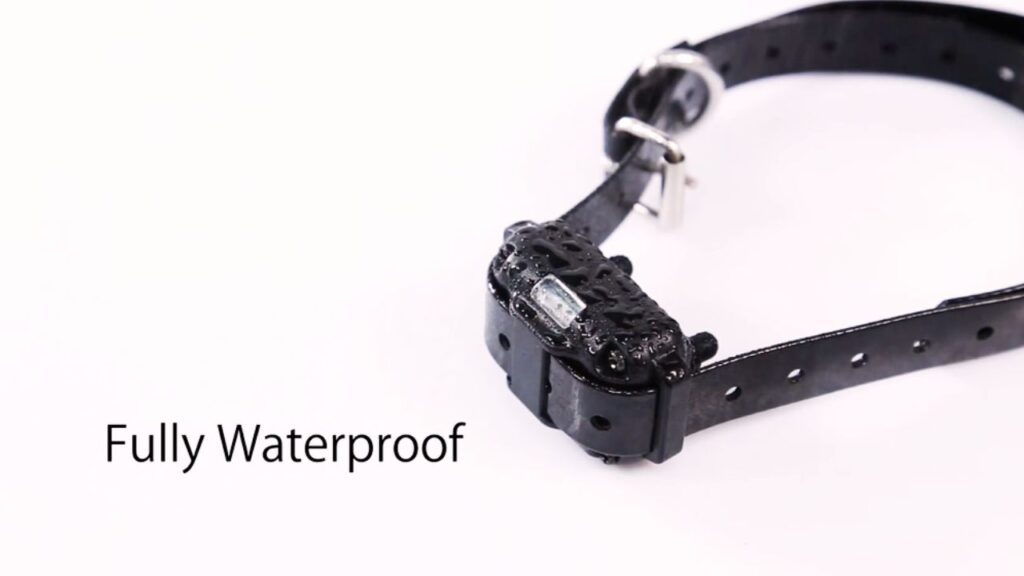
Yes, many dog shock collars are designed to be waterproof, making them suitable for dogs that swim, play in the rain, or enjoy other outdoor activities. Waterproof shock collars are typically sealed to protect the internal electronics from water damage.
However, not all shock collars are waterproof; some are only water-resistant, meaning they can handle light rain or splashes but may be damaged if submerged in water. Always check the manufacturer’s specifications to understand the level of water protection provided.
Learn more about the unique double-layered coat of an Anatolian Shepherd and how to care for it effectively.
Understanding Waterproof vs. Water-Resistant Shock Collars
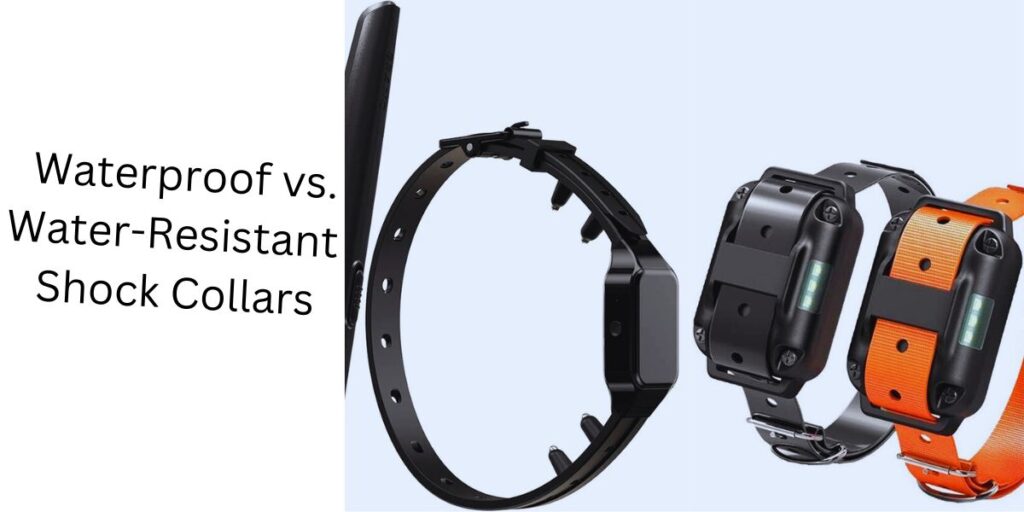
What Does Waterproof Mean?
A waterproof shock collar is designed to be fully submerged in water without malfunctioning. These collars are typically rated with an IPX7 or IPX8 waterproof standard, which means they can withstand being in water for a certain period and depth (e.g., up to 3 feet for 30 minutes).
What Is Water-Resistant?
Water-resistant shock collars can handle exposure to light moisture, like rain or splashes, but are not meant to be fully submerged. These collars are suitable for dogs that stay mostly dry but may occasionally encounter wet conditions.
Key Differences:
- Waterproof: Fully submersible; suitable for swimming and water play.
- Water-Resistant: Withstands rain and splashes; not intended for full submersion.
If your dog enjoys swimming or frequently gets wet, investing in a waterproof collar is essential to avoid malfunctions.
For step-by-step instructions on properly fitting a collar on your Bedlington Terrier, visit this comprehensive guide on how to put collars on Bedlington Terrier.
Why Waterproof Shock Collars Are Important
1. For Outdoor and Water-Loving Dogs

If your dog loves the outdoors, a waterproof shock collar allows them to swim, splash, and play without damaging the collar. This can be especially useful if you take your dog on hikes, to lakes, or to the beach.
- Example: A Labrador Retriever that swims frequently would benefit from a waterproof collar to ensure it continues working regardless of water exposure.
- Benefit: Eliminates the need to remove the collar before water activities, ensuring continuous training and safety.
2. Ensures Durability in Wet Conditions

A waterproof shock collar is more durable because it can withstand rain, mud, and even snow. This durability extends the collar’s lifespan, making it a more economical choice in the long run.
- Example: Hunting dogs or working dogs that encounter wet environments benefit from a waterproof collar.
- Benefit: Prevents the need for frequent replacements, reducing costs over time.
3. Prevents Electronic Malfunctions
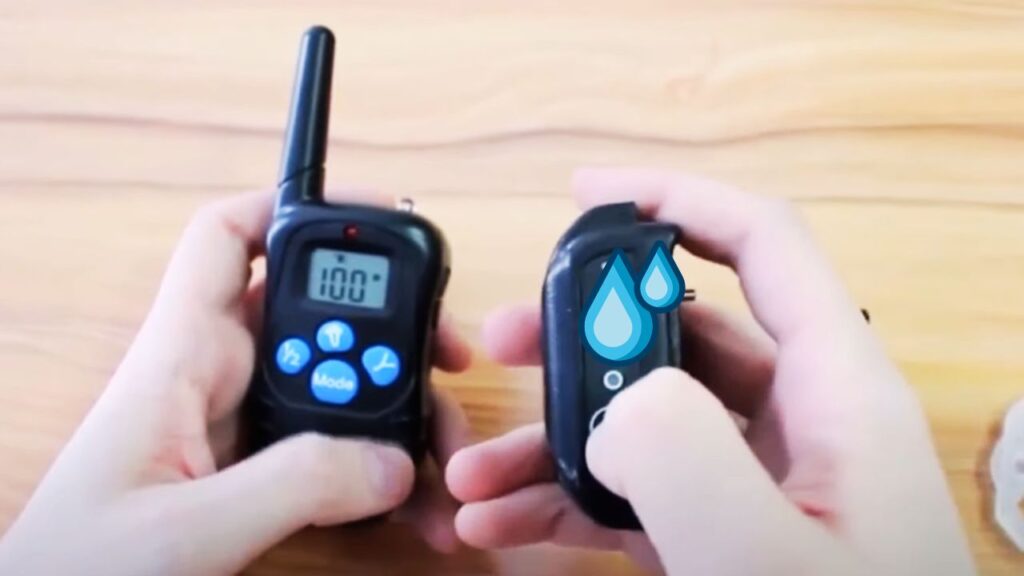
Water can damage electronic components, leading to malfunctions or permanent failure of the collar. A waterproof collar protects the internal electronics, ensuring consistent functionality even in wet conditions.
- Benefit: Peace of mind knowing the collar will function correctly regardless of water exposure.
For detailed guidance on ensuring the perfect collar fit for your St. Bernard, check out the Best Practices for St. Bernard Collar Adjustment to keep your dog comfortable and secure.
Comparison Table: Waterproof vs. Water-Resistant Shock Collars
Here’s a quick comparison to help you decide between waterproof and water-resistant shock collars based on your dog’s needs and lifestyle.
Table: Comparison of Waterproof vs. Water-Resistant Shock Collars
Discover the perfect collar size for an Anatolian Shepherd Dog to ensure comfort and security for your furry friend.
Expert Opinions on Waterproof Dog Shock Collars
Veterinarians
Veterinarians emphasize that for dogs that regularly engage in water activities, a waterproof shock collar is essential. The risk of malfunction or accidental shock increases with water exposure if the collar is not waterproof.
- Dr. Sarah Wooten, DVM: “Waterproof shock collars provide greater safety for active dogs by reducing the chance of malfunctions in wet conditions, which can cause unintentional shocks or discomfort.”
Dog Trainers
Professional dog trainers recommend waterproof shock collars for dogs that work or train in environments with frequent water exposure. They note that waterproof collars allow for uninterrupted training sessions, even in rain or wet terrain.
- Zak George, Dog Trainer: “Waterproof collars are ideal for dogs with active lifestyles. They prevent interruptions during training and eliminate the risk of accidental malfunction due to water exposure.”
Product Manufacturers
Manufacturers often specify the waterproof level in product descriptions, helping buyers make informed choices based on their dogs’ lifestyles.
- Garmin, Dog Collar Manufacturer: “Our waterproof collars are rated to IPX7 standards, meaning they can withstand submersion in water up to 3 feet for 30 minutes—ideal for dogs that love water.”
Ensure your Newfoundland’s comfort and security with expert tips on how to ensure a safe collar fit for Newfoundland.
Tips for Choosing and Using a Waterproof Shock Collar
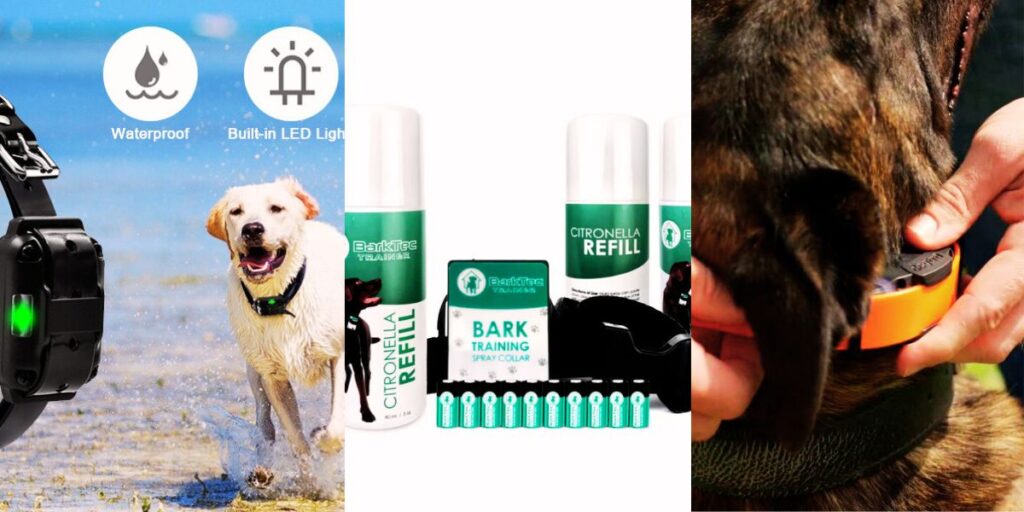
Here are some tips to get the best results from a waterproof shock collar:
- Check the IP Rating: Look for collars with IPX7 or higher ratings, as this ensures full waterproof protection. This rating is an international standard for water resistance in electronics.
- Consider Your Dog’s Activity Level: Choose a waterproof collar if your dog regularly encounters water. If they’re mostly dry, a water-resistant collar may be sufficient.
- Adjust for a Proper Fit: Ensure the collar fits snugly but comfortably around your dog’s neck to prevent it from slipping or moving during water activities.
- Clean Regularly: Wash the collar with fresh water after exposure to saltwater, mud, or sand to prevent buildup and maintain durability.
- Test the Collar Before Long Outings: Test the collar’s functionality at home to ensure it’s working correctly, especially before hikes, swims, or other extended outings.
For detailed guidance on selecting the correct collar size for a Belgian Shepherd, this article provides essential tips to ensure your dog’s comfort and safety.
Conclusion
For dogs that frequently swim or spend time in wet environments, waterproof shock collars are a reliable and safe option. These collars are designed to protect internal electronics from water damage, ensuring they continue to function even in challenging outdoor conditions. Whether your dog loves water or you simply want a more durable training tool, a waterproof collar provides flexibility, durability, and peace of mind.
Discover the ideal fit by learning what size collar for Newfoundland dog to ensure your pet’s comfort and safety.
Final Recommendations
- Choose Based on Activity Level: Select a waterproof collar if your dog frequently encounters water; otherwise, a water-resistant collar may suffice.
- Check Waterproof Ratings: Look for an IPX7 or higher rating to ensure full waterproof protection.
- Fit and Comfort: Make sure the collar fits properly to avoid discomfort or slipping during activities.
- Regular Maintenance: Rinse the collar after exposure to saltwater or mud to extend its lifespan.
- Consult with Professionals: If unsure, ask a veterinarian or dog trainer for advice on choosing the best collar based on your dog’s activity level and training needs.
Investing in a quality waterproof shock collar can provide effective training support while keeping your dog safe and comfortable during all their outdoor adventures.
For expert tips on how to fit a collar on a Belgian Shepherd, this guide offers simple steps to ensure your dog’s collar fits securely and comfortably.
FAQs
1. Are all shock collars waterproof?
No, not all shock collars are waterproof. Some are only water-resistant, which means they can handle rain or splashes but not full submersion. Always check the product specifications.
2. Can waterproof shock collars be used for swimming?
Yes, waterproof shock collars with an IPX7 rating or higher are suitable for swimming and can withstand full submersion in water.
3. How do I clean a waterproof shock collar?
Rinse the collar with fresh water, especially after exposure to saltwater or mud. Avoid using harsh chemicals that could damage the material.
4. Do waterproof shock collars cost more?
Yes, waterproof shock collars typically cost more due to the added protection and durability features. However, they are a worthwhile investment for active dogs.
5. How long do waterproof shock collars last?
With proper care, waterproof shock collars can last for several years, depending on the brand and frequency of use. Regular cleaning and proper storage can extend their lifespan.

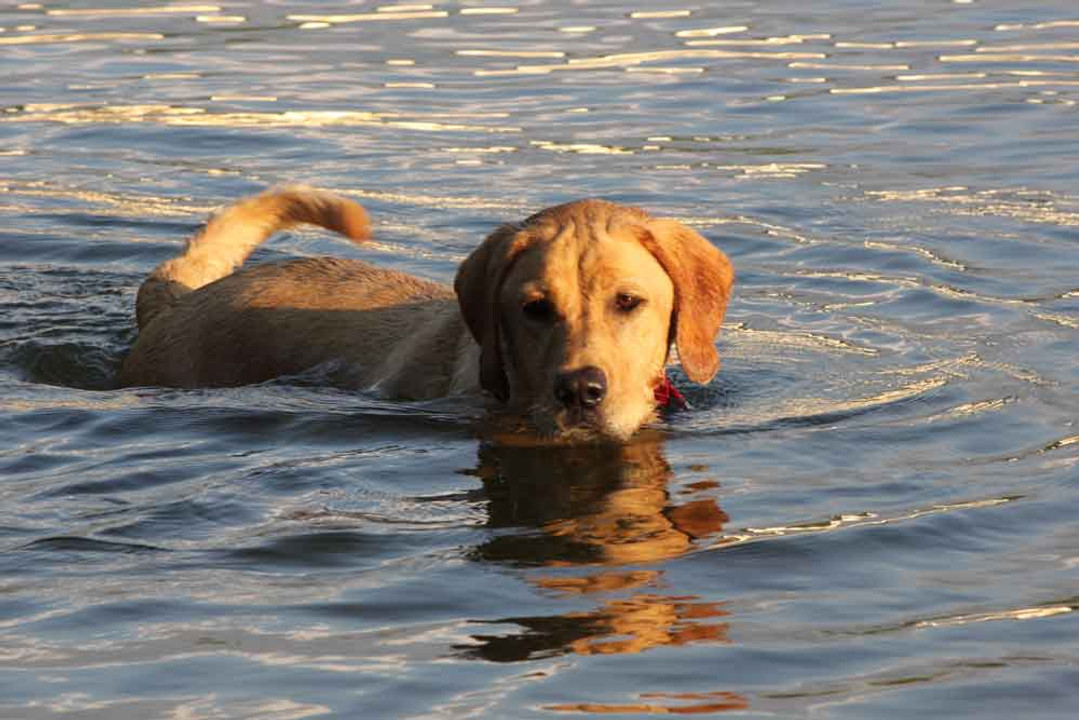


![Bousnic Dog Shock Collar with Remote - [New Edition] 4000FT Dog T...](https://m.media-amazon.com/images/I/51x3EgeqBLL.jpg)
